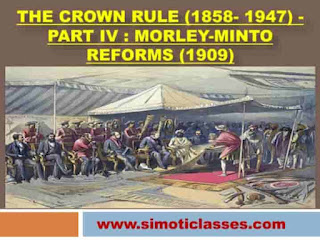The Company Rule (1773- 1858) - Part III
Charter Act of 1833:
This act was the final step towards centralization in British India.
Features of Act:
- It made the Governor-General of Bengal as the Governor-General of India and vested in him all civil and military powers. Thus, the act created, for the first time, a Government of India having authority over the entire territorial area possessed by the British in India. Lord William Bentick was the first governor-general of India.
- It deprived the governor of Bombay and Madra of their legislative powers. The Governor-General of India was given exclusive legislative powers for entire British India. The laws made under the previous acts were called as Regulations while laws made under this act were called ac Acts.
- It ended the activities of the East India Company (EIC) as a commercial body, which became purely as an administrative body. It provided that the company's territories in India were held by it "in trust for His Majesty, His heirs, and successors".
- The Charter Act of 1833 attempted to introduce a system of open competition for the selection of civil servants and stated that the Indians should not be debarred from holding any place, office, and employment under the Company. However, this provision was negated after opposition from the Court of Directors.




























